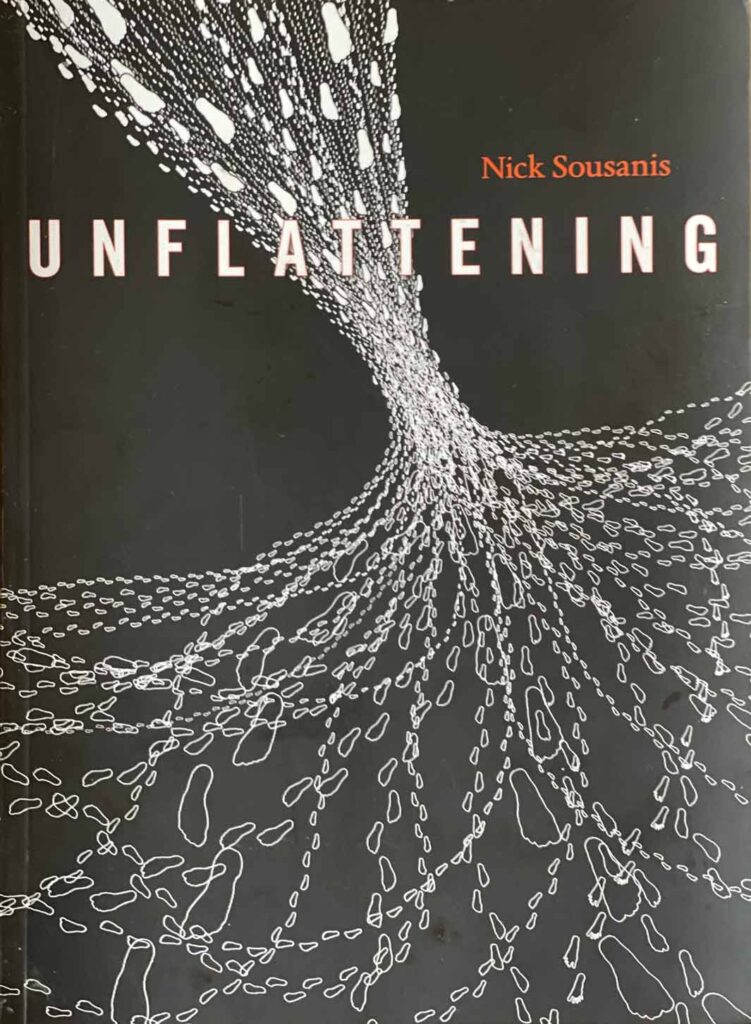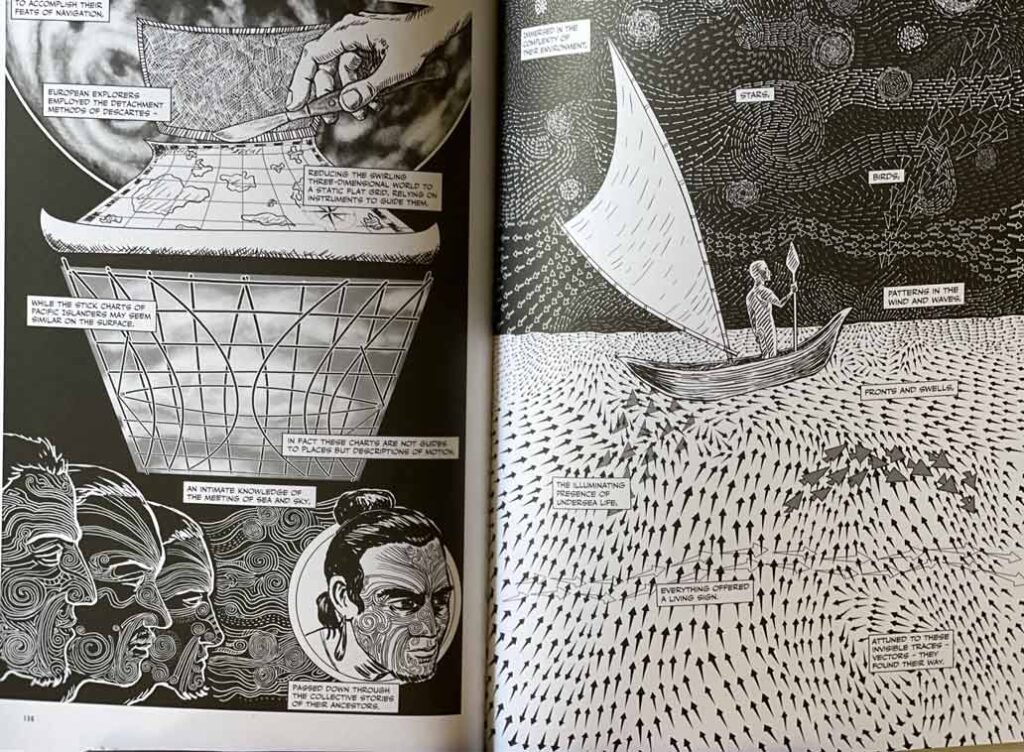Unflatten Your Storytelling

You’re attempting to tell a story that’s important to you. But try (and try) as you might, words fail. Not that you don’t use good ones. Great ones, even. But words alone aren’t cutting it, aren’t fully capturing or communicating your vision, aren’t doing justice to the story’s breadth and complexity. In which case, maybe do as scholar, artist and educator Nick Sousanis did in his breakthrough dissertation-cum-award-winning graphic novel, Unflattening, and bring other tools to bear.
For Sousanis, that meant using comics. After drawing loads of comics in his youth, he’d turned to math and art degrees in his undergrad and Masters studies. But he circled back to them in subsequent art making. He came to value comics as an educational tool, as well. The power of combining words and images to engage readers’ brains on two planes, Sousanis believed, broadened their perceptions, forcing new ways of seeing on them, offering multiple vantage points and new perspectives from which to consider the narrative.

So for his doctoral dissertation at Teachers College Columbia University, Sousanis embraced comics. Not to be difficult or controversial, but to prove his case for using comic conventions and illustration-styles to radically alter and augment reader experiences. And to better tell stories. To add dimension to them. In the process, Sousanis re-imagined what a dissertation could be. Harvard Univ Press subsequently published that thesis as Unflattening.

Sousanis reflected on creating a dissertation in comics form for Media Commons’ #alt-academy. He revealed that, rather than being forced to sneak Unflattening past university censors or truculent advisors, he’d been accepted in the PhD program in part based on educational and research-oriented comics he’d done. He was expected to expand and expound upon their use in his thesis.
“A central premise of the dissertation that emerged in making it was that we are able to see more and have a greater means to grasp and convey our own thinking by incorporating multiple modes into our work. In bringing our whole selves to the creative and critical process we are better able to make discoveries. For me, working in image and text in the ways that comics allow sent me in unanticipated directions, pushed my research in ways I wouldn’t have gone otherwise – and the work was far richer for it.”
Nick Sousanis
Unflattening is drawn entirely in black and white. Yet it’s ravishing to look at. Its effects are both cerebral and visceral. It’s impossible to absorb everything Sousanis seems to be saying in one reading, or even in several. The book can be “read” in any number of ways…making it one you can always pick up, find something new in…and learn something new from. As well as making it tremendously hard to describe. Publisher’s Weekly offered a cogent (and sterling) review.

“Weaving together language, perception, and the theory of knowledge in an investigation of how the multidimensional possibilities of graphic storytelling can awaken us to ways of knowing from multiple perspectives, Sousanis has made a profound contribution to the field of comics studies and to semiotics, epistemology, and the burgeoning study of visible thinking. Essential reading for anyone seeking to create, critique, or consider the visual narrative form.”
Publisher’s Weekly